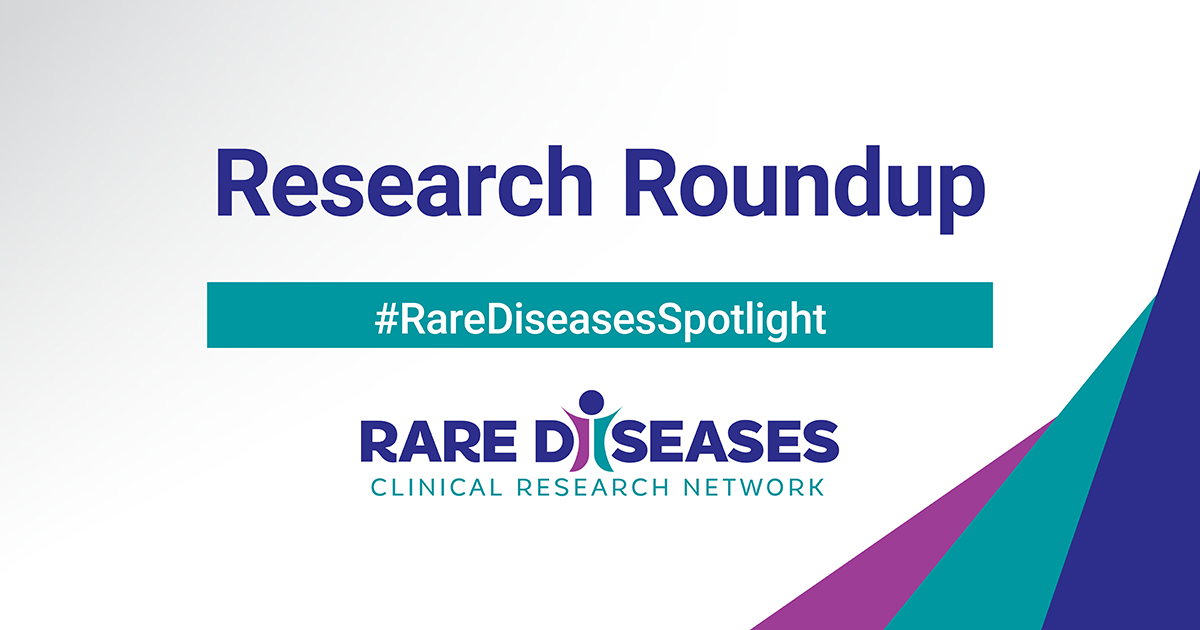Each month, we share summaries of recent Rare Diseases Clinical Research Network (RDCRN) grant-funded publications. Catch up on the latest RDCRN research below.
Jump to:
- Clinical Research in ALS and Related Disorders for Therapeutic Development (CReATe)
- Consortium of Eosinophilic Gastrointestinal Disease Researchers (CEGIR)
- Dystonia Coalition (DC)
- Inherited Neuropathy Consortium (INC)
- Porphyrias Consortium (PC)
Clinical Research in ALS and Related Disorders for Therapeutic Development (CReATe)
New Study Identifies Urinary Neopterin as a Potential Measure of Disease Progression in ALS
Amyotrophic lateral sclerosis (ALS) is a degenerative motor neuron disease that leads to progressive muscle weakness. There are currently no meaningfully effective treatments for ALS, which is invariably fatal. Biomarkers that are suitably fit-for-purpose have great potential to enhance therapy development efforts. A research team led by Dr. Mary Louise-Rogers at Flinders University in Australia has found that urinary neopterin, a marker of an underlying pro-inflammatory state, is elevated in ALS compared to age-matched controls, and progressively increases as the disease advances. In addition to its potential utility as a biomarker of disease progression, neopterin might also have potential as a predictive biomarker, identifying a subset of patients who may stand to benefit from therapeutics that target inflammatory pathways.
Consortium of Eosinophilic Gastrointestinal Disease Researchers (CEGIR)
Eosinophilic Gastrointestinal Disease May Provide Protective Effect Against Severe COVID-19 Outcomes
Little is known about eosinophilic gastrointestinal disease (EGID) and COVID-19 outcomes. By reducing viral entry into cells, the mucosal responses of patients with EGID may protect against severe effects of COVID-19.
In this study, researchers compared hospitalization rates, ventilator dependence, and death between patients with and without EGID. When compared with non–EGID COVID-19 positive patients, they found that EGID COVID-19 positive individuals stayed longer in the hospital, yet had lower rates of inpatient mortality.
This analysis suggests that EGID may provide a protective effect against severe COVID-19 outcomes. In future studies, researchers plan to further explore the protective role of reduced expression of ACE2/TMPRSS2 and the eosinophilic disease itself in COVID-19 mortality.
Children in Rural Areas Likely Face Diagnostic Disparities for Eosinophilic Esophagitis
Eosinophilic esophagitis (EoE) is characterized by immune cells called eosinophils building up in the esophagus, which may cause polyps, tissue break down, inflammation, and ulcers. In this cross-sectional study, researchers examined data from children enrolled in Medicaid 2012. They found that the apparent lower prevalence of eosinophilic esophagitis in rural communities was attenuated when adjusting for distance to provider. These results suggest that diagnostic disparities likely exist for eosinophilic esophagitis among children residing in rural areas.
Dystonia Coalition (DC)
Study Explores Neuropathology of Blepharospasm
The dystonias are a group of disorders characterized by excessive muscle contractions leading to abnormal repetitive movements or postures. Blepharospasm is a subtype of dystonia characterized by overactive facial muscles. Previous brain imaging studies have implied subtle structural changes in blepharospasm, but the nature of these changes is not well understood.
In this study, researchers found subtle loss of cerebellar Purkinje neurons in histopathological studies of brains from blepharospasm cases. These findings are similar to those reported for subjects with cervical dystonia.
“To focus on what we should be looking for in blepharospasm, we used what we learned about cervical dystonia published in 2013 in a prior funding cycle,” says H. A. Jinnah, MD, PhD, principal investigator of the DC. “Thus, the RDCRN strategy of combining similar disorders under the same research umbrella is successful in facilitating both the research questions and methodologies.”
Inherited Neuropathy Consortium (INC)
New Study Sheds Light on Charcot-Marie-Tooth Disease Type 2CC
Researchers seeking to better understand axonal Charcot-Marie-Tooth disease type 2CC (CMT2CC) conducted an observational study of 30 affected and 3 asymptomatic mutation carriers from 8 families, examining phenotype-genotype correlations. Study subjects had variants in the gene NEFH, which is thought to cause CMT2CC. Researchers found that most patients developed lower-limb predominant symptoms in adulthood. The disease progressed more rapidly than is typically seen in other CMT subtypes, and half of patients needed to use a wheelchair an average of 24.1 years after symptoms began. They found that that the unusual phenotype of CMT2CC is more similar to spinal muscular atrophy than classic CMT. Study authors said that these findings should allow a better understanding of the natural history of the disease and aid in variant interpretation.
Porphyrias Consortium (PC)
Study Highlights Need for Cancer Screening in Patients with Acute Hepatic Porphyrias
The acute hepatic porphyrias (AHP) are a family of rare genetic diseases that present with acute attacks, nausea, and vomiting which can last for several days. These disorders can also have chronic symptoms and an increased risk for long-term manifestations. The risk for hepatocellular carcinoma (HCC) is increased in patients with acute hepatic porphyrias. In order to characterize the symptoms, outcomes, and frequency of HCC in patients with AHP in the United States, researchers undertook a multicenter, longitudinal study. Among 327 patients with AHP, 5 (1.5%) were diagnosed with HCC. Cirrhosis was not present in AHP patients with HCC, unlike what is typically seen with other chronic liver diseases. Study authors recommend that patients with AHP should be screened for HCC beginning at age 50.
The Rare Diseases Clinical Research Network (RDCRN) is funded by the National Institutes of Health (NIH) and led by the National Center for Advancing Translational Sciences (NCATS) through its Division of Rare Diseases Research Innovation (DRDRI). Now in its fourth five-year funding cycle, RDCRN is a partnership with funding and programmatic support provided by Institutes, Centers, and Offices across NIH, including the National Institute of Neurological Disorders and Stroke, the National Institute of Allergy and Infectious Diseases, the National Institute of Diabetes and Digestive and Kidney Diseases, the Eunice Kennedy Shriver National Institute of Child Health and Human Development, the National Institute of Arthritis and Musculoskeletal and Skin Diseases, the National Heart, Lung, and Blood Institute, the National Institute of Dental and Craniofacial Research, the National Institute of Mental Health, and the Office of Dietary Supplements.

